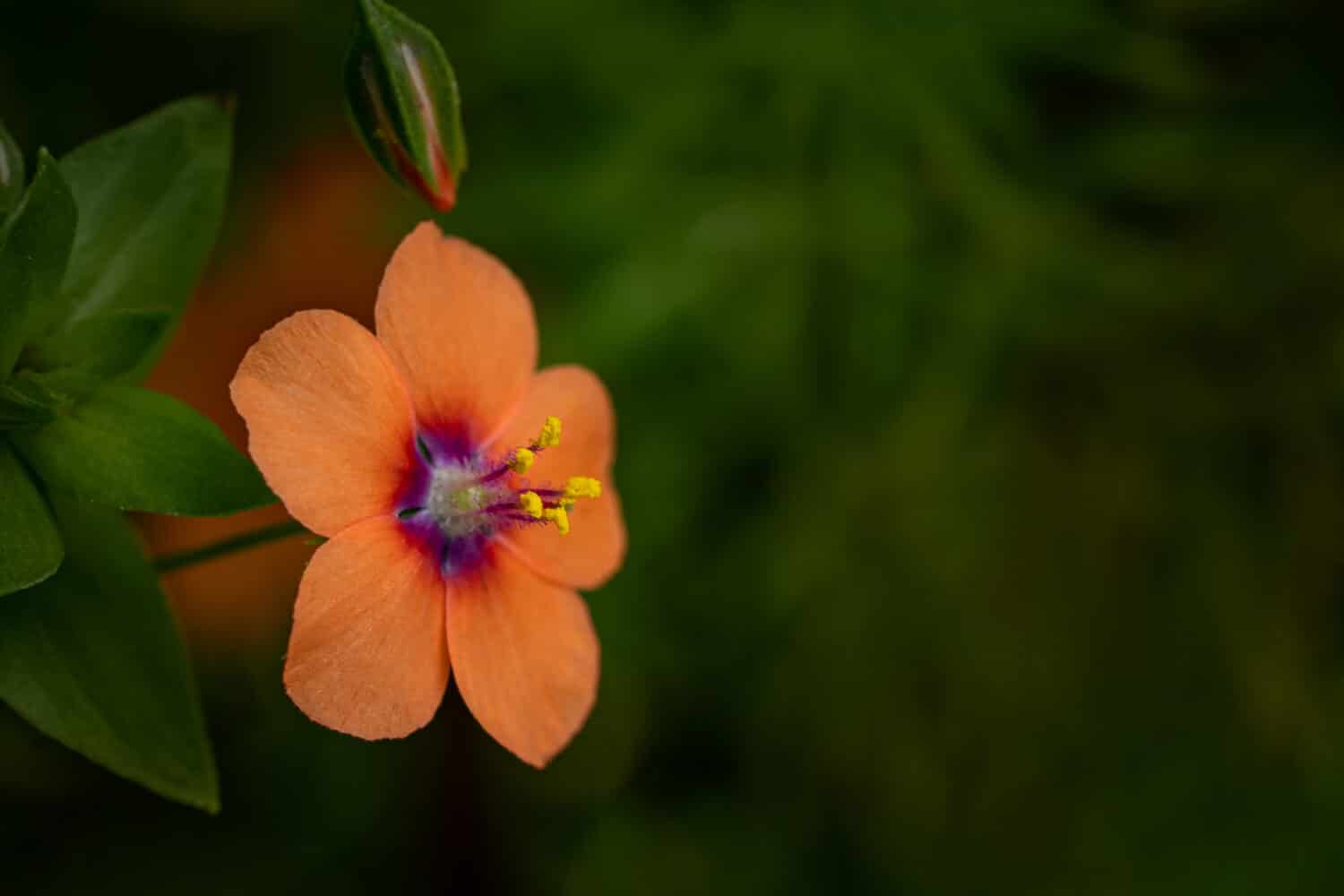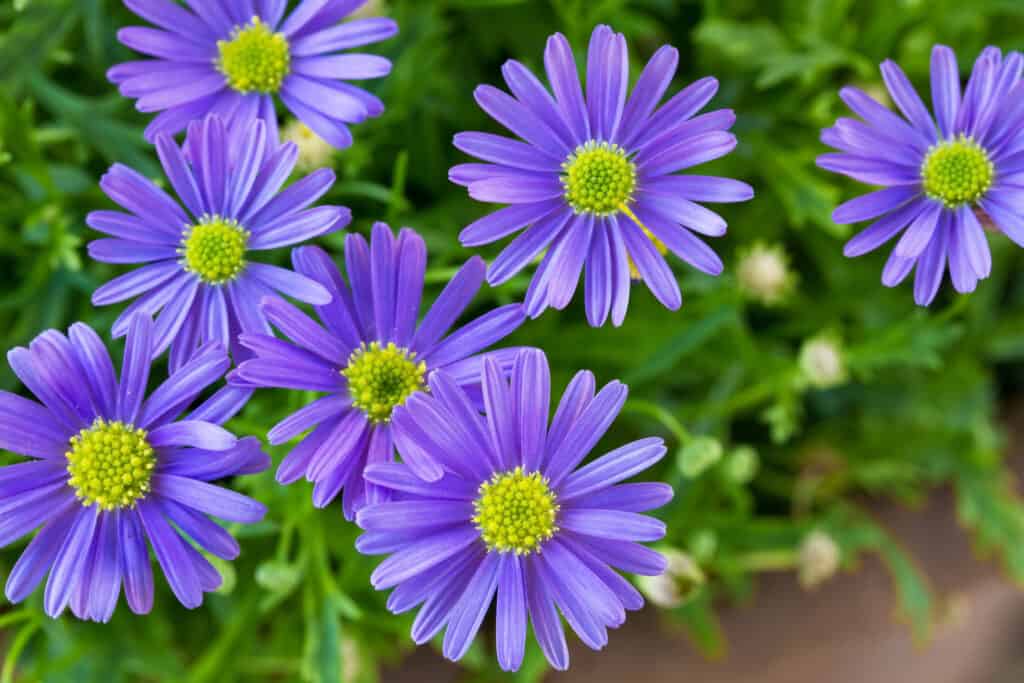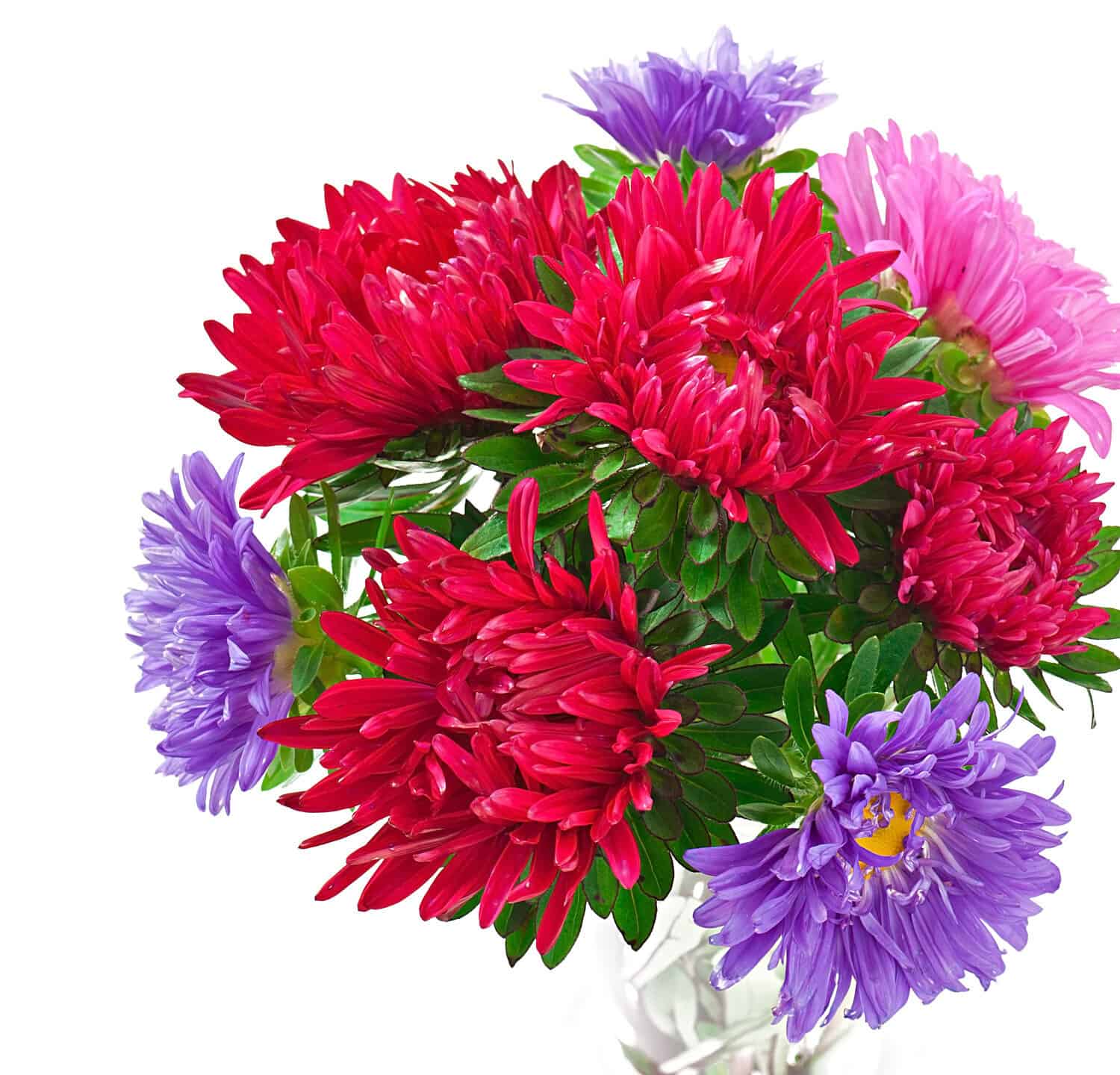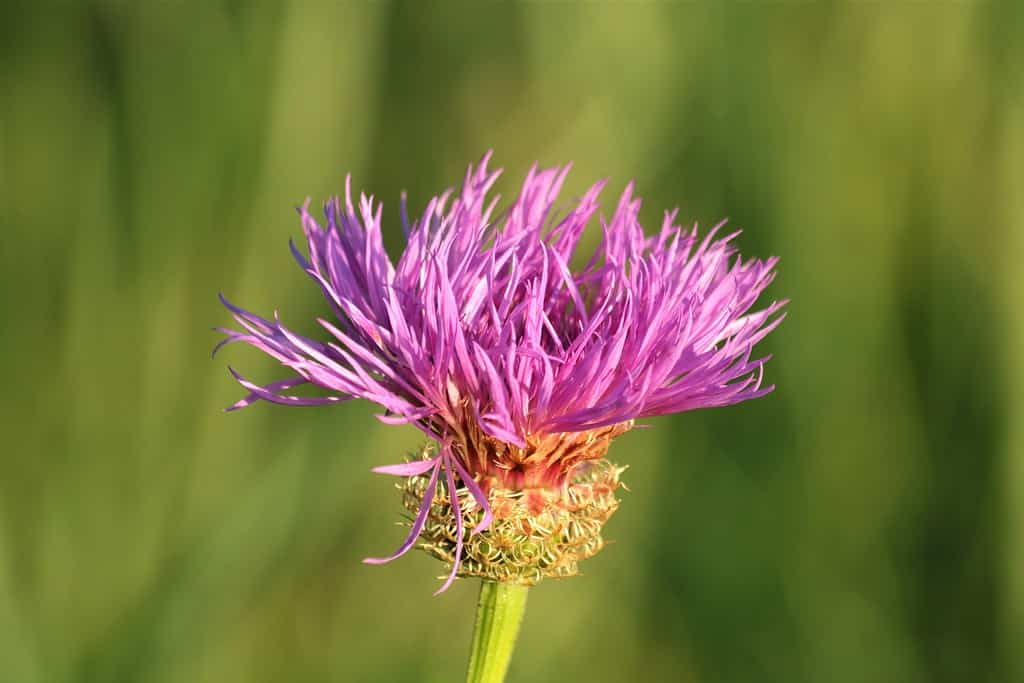If you’re lucky enough to live in USDA Hardiness Zone 11, you’re in a gardener’s paradise. This zone boasts a tropical climate, with winter temperatures rarely dipping below 40°F. This warmth allows many stunning annual flowers to flourish throughout the year. Your garden can become a vibrant oasis, brimming with color and life, thanks to the mild winters.
From bright marigolds to delicate petunias, the options are as diverse as they are beautiful. Read on to discover the best annual flowers for your Zone 11 garden.
What Is USDA Zone 11?
The United States Department of Agriculture (USDA) separates the US into 13 climate zones for growing crops. These zones are categorized by their average minimum temperatures. Zone 1 has the lowest average temperatures, and zone 13 has the highest average minimum temperatures. Zone 11 has an annual minimum temperature of between 40 and 50 degrees Fahrenheit. A wide range of greenery, including tropical plants, is supported in this climate, with the main struggle being the scorching summers. Zone 11 is comprised of some coastal regions of the US South and Southern Florida (including the Keys), as well as select areas of Hawaii and Puerto Rico.
1. Blue Mink (Ageratum houstonianum)

Blue mink is a beautiful Flower that can survive very well in zone 11.
©Lazaregagnidze, CC BY-SA 3.0 <https://creativecommons.org/licenses/by-sa/3.0 / via Wikimedia Commons – Original / License
Kicking off our list of top annual flowers for Zone 11 is the eye-catching blue mink. Celebrated for its prolonged flowering period, ‘Blue Mink’ (also known as Floss Flower) is a small, dense, semi-tender annual plant that boasts an abundance of fluffy, powder-blue flowers from late spring till the first frost.
These blossoms, which attract butterflies, are supported by strong stems and hover above the plant’s medium-green, ovate leaves. Given its petite size, the blue mink is ideal for the edges or borders of flower beds and rock gardens or for adding color to containers.
Blue mink thrives in a full sun location with rich, damp, well-draining soil. It appreciates a bit of afternoon shade during hot summers and prefers consistent moisture throughout the growing season.
There are no major pest or disease concerns with this plant. However, root rot can occur in water-logged soils. An added bonus – deer and rabbits tend to avoid it.
2. Toothpick Weed (Ammi visnaga)
Toothpick weed, a lovely sturdy annual or biennial plant, enhances borders or floral arrangements with its soft elegance. It features large, dome-shaped clusters spanning up to 5 inches, densely filled with white flowers that effortlessly blend with neighboring plants in the border.
Toothpick weed blooms from early summer to fall, offering a decently long flowering period. Even in colder seasons, it retains its charm thanks to the dried flower heads, which become a food source for birds in autumn and winter.
The plant does well in partial shade or full sun, thriving in rich, damp, well-drained soils. You can grow it from seeds sown in the fall or spring. Plant the seeds outdoors once the threat of frost is over or indoors 6-8 weeks before the last spring frost date. Under suitable growth conditions, the plant will self-seed freely.
One point of caution, however, is that contact with the plant’s sap might lead to skin irritation or an allergic reaction.
3. Scarlet Pimpernel (Anagallis arvensis)

An amazing flower that can survive in tropical conditions is scarlet pimpernal. A gorgeous annual flower for zone 11.
©Light and Vision/Shutterstock.com
The scarlet pimpernel is a petite, ground-covering annual weed known for its small, green, egg-shaped leaves. These leaves are arranged oppositely along their uniquely four-sided stems.
The plant exhibits reddish-orange flowers from spring to fall (or late winter through to late summer in the southern hemisphere). Each flower flaunts five rounded petals and five yellow stamens, with each one arising singly from stalks that originate at the leaf joints.
The plant thrives in full sunlight and can adapt to a wide array of soil types, predominantly in disturbed conditions. Remarkably, it’s virtually untouched by pests or diseases.
Remember, scarlet pimpernel is toxic to livestock such as horses, sheep, and cattle, domestic animals like birds, dogs, guinea pigs, rabbits, and humans.
4. Profusion Double Fire (Zinna grandiflora)

Profusion double fire is a hybrid flower that was made from two different
Zinniaspecies. This cross breed can survive in all hardiness zones besides zone 13.
Considered a remarkable innovation in Zinnias, the ‘profusion double fire’ is a beautiful hybrid derived from Zinnia angustifolia and Zinnia elegans. This crossbreed possesses the admirable qualities of its parent species, such as resistance to diseases and high tolerance to drought, heat, and humidity. In fact, profusion double fire can survive in zones 1 to 12!
Furthermore, they are low-maintenance as they don’t require deadheading. The profusion double fire flaunts double-layered, intensely bright orange flowers, each about 2-3 inches wide. The flowers are plentiful and truly eye-catching as a group.
They are an excellent choice for sunny borders and can also be arranged into charming mini bouquets. Zinnias, including the profusion double fire,’ are annuals that thrive in full sunlight and favor evenly moist and well-draining soil.
Beloved by butterflies, hummingbirds, and birds, these flowers thrive best when they are not crowded, which helps prevent diseases and powdery mildew. Good air circulation around these plants is crucial!
5. Pure White Butterfly (Argyranthemum frutescens)
The pure white butterfly is typically a brief-lived, tender perennial or subshrub. That said, it iss often cultivated as an annual. It blooms incessantly from the time of planting until the first harsh frost, displaying an abundance of large, pure white daisy-like flowers that nearly engulf the plant.
The plant’s foliage consists of a tidy mound of green, roughly divided leaves. This marguerite variety, which flowers for months without the need for deadheading, is exceptionally easy to cultivate. While it is more heat-resistant than older varieties, it thrives best with cooler night temperatures.
This plant flourishes in full sun with average moisture, well-drained soils. It can also tolerate a bit of shade, particularly in regions with hot summers.
In Zone 11, the pure white butterfly is one of the easiest annual flowers to cultivate!
6. Swan River Daisy (Brachyscome iberidifolia)

Swan river daisy is a gorgeous and hardy flower species that can come in blue, purple, punk or white.
©iStock.com/HaraldBiebel
The Swan River daisy originating from Australia, is a member of the Asteraceae family. This plant produces small flowers resembling daisies, available in hues of blue, pink, purple, and white.
These fragrant blooms resemble tiny daisies and span about one inch across. Each flower has a yellow center encircled by colorful ray florets. The flowers, which typically bloom for 3 to 4 weeks, are so abundant that they often overshadow the foliage.
This plant prefers locations with full sun to partial shade. For the best flower yield and overall health of the plant, aim to provide a minimum of 6 to 8 hours of direct sunlight daily.
As for the soil, Swan River daisy thrives in organically rich, well-draining soil. It can accommodate a variety of soil types, from sandy to loamy, but it’s essential to have good drainage to prevent root rot.
7. Cabaret Deep Blue (Calibrachoa hybrida)
Cabaret deep blue is a sturdy, branching, trailing perennial often cultivated as an annual. This variety is known for its abundant deep blue-purple blooms, each with a vibrant yellow center, that appear from late spring until the initial frost.
This variety of Calibrachoa, bearing a strong resemblance to petite petunias, is a vigorous bloomer throughout the season. It works wonders in containers or hanging baskets, either as a filler or spilling gracefully over the sides. It can tolerate heat, is easy to cultivate, and draws hummingbirds, creating a spectacular display throughout the summer.
This plant thrives under full sun to partial shade conditions and prefers well-drained soil. In container setups, it’s best to let the top layer of the soil dry out before watering again. One of the benefits of this variety is that it’s self-cleaning, with no need for deadheading.
8. Chinese Aster (Callistephus chinensis)

Another amazing flower that can thrive in USDA zone 11 is Chinese aster. This plant also comes in a wide variety of colors.
©Chatham172/Shutterstock.com
China aster, also known as Chinese aster, is a low-maintenance annual to cultivate, appreciated for its vibrant blossoms and its popularity as a cut flower. It produces flowers from late spring or early summer right through to autumn.
The flowers, which can be white, pink, red, blue, violet, purple, or yellow, typically reach a diameter of 3 to 5 inches, subject to the specific variety. Commonly, they feature a single row of vibrant petals surrounding a yellow central disc.
However, variations exist, such as semi-double types with multiple rows of outer petals surrounding a yellow disc, completely double blooms where the yellow center isn’t visible, and fluffy pompom types, often favored for bouquets.
To flourish, China asters require full sun to partial shade. For the brightest colors and robust growth, plant your China aster in rich, consistently moist, well-draining soil with a pH of 5.5 to 7.5. Regular watering is necessary, usually twice a week, though drier climates may demand more frequent watering.
9. Texas Indian Paintbrush (Castilleja indivisa)

Found across the Texas hill country in spring, the Texas Indian paintbrush is spectacular flower for Zone 11.
©Loadmaster (David R. Tribble)This image was made by Loadmaster (David R. Tribble).Email the author: David R. TribbleAlso see my personal gallery at Google Photos / CC BY-SA 3.0 – Original / License
The Texas Indian paintbrush, a stunning annual or biennial flower, is one of the best flowers for Zone 11. This plant presents dazzling bright-red spikes resembling paintbrushes, stretching 3-8 inches in length, on unbranched, upright stems.
During springtime, it produces small, relatively unnoticed, creamy white to pale yellow flowers nestled amidst a collection of petal-like bracts, which grant the plant its spectacular look. The Indian paintbrush serves as a vital source of nectar for hummingbirds and various insects, including butterflies and bees.
Notably, the Indian paintbrush displays hemiparasitic behavior, drawing required hydration and nutrients from the root systems of neighboring host plants.
The Texas Indian paintbrush thrives under full sun in well-drained, acidic soils, whether loam, sandy, dry, or clay. Although it performs best under full sunlight, the plant can endure some shade. In terms of upkeep, this plant requires minimal maintenance, is free from common diseases and pests, and can tolerate drought conditions.
10. American Basketflower (Centaurea Americana)

This pinkish-lavender flower is the American basketflower, which is an annual flower that can grow in Zone 11.
American basketflower is a splendid annual flower that grows well in Zone 11. This flower is known for its sweet honey-like aroma, showcasing impressive large flowers, about 4-5 inches in diameter. The flowers are composed of pinkish-lavender ray flowers. The plant blooms from late spring until late summer. The flowers emerge from egg-shaped buds covered in a unique pattern of bristled scales resembling a woven texture.
These flowers sit on top of tall, robust stems decorated with lance-shaped leaves, which attract butterflies and other pollinators. The American basketflower, an easily grown wildflower, is perfect for the rear of flower borders or meadow plantings. It is also excellent for cutting and drying.
In terms of growth conditions, the American basketflower thrives under full sun in slightly acidic to neutral soils with dry to medium moisture levels, and it prefers well-drained soil. Once established, this plant exhibits drought tolerance.
11. Blue Diadem (Centaurea cyanus)
Presenting captivating, abundant flowers over several months, blue diadem, a variety of cornflowers, boasts double flowers in a delightful sky blue color, complemented by dark purple stamens. From spring until early fall, these cheerful blossoms sprout on branching stems cloaked in lance-shaped, silvery-green leaves. The flowers, a magnet for bees, butterflies, and other admirers, are excellent for cutting.
These cornflowers favor full sun or light shade, and they thrive in average, medium, well-drained soils. They are highly adaptable and can grow even in the poorest soils. However, the plant may droop if grown in too much shade, and taller plants might require staking. While these annuals can survive with minimal watering and no fertilizer in Zone 11, providing regular watering can keep the plants healthier.
Blue diadems are easy to grow and typically free from pests and diseases, though you should keep an eye out for aphids and mealybugs. What’s more, they demonstrate resistance to deer and drought, making them an excellent low-maintenance option for your garden.
12. Double Click Bicolor Rose (Cosmos bipinnatus)
Double click bicolor rose is an annual that showcases attractive rose-hued, fluffy double flowers that grow up to 3 inches wide. From early summer to fall, the striking blossoms stand tall on stems, hovering above the plant’s delicate, feathery leaves.
This plant is relatively pest-free and easy to care for, and it draws in a host of butterflies. It adds a graceful touch to any garden, making it an excellent choice for sun-kissed borders or containers. Additionally, these flowers make stunning cut flowers.
The plant thrives in sunny spots with average, moist, well-drained soils. Be vigilant for aphids, slugs, and gray molds. This plant is propagated via seeds. To encourage continuous blooming, snip off spent blossoms. If the flower heads are left intact, the plant will self-seed without becoming a nuisance.
Summary of the Best Annual Flowers For Zone 11
| Flower | Blooming Period |
|---|---|
| Blue Mink | Late spring to frost |
| Toothpick Weed | Early summer until fall |
| Scarlet Pimpernel | Spring to fall |
| Profusion Dobule Fire | Late spring to fall |
| Pure White Butterfly | Planting to hard frost |
| Swan River Daisy | Late spring to frost |
| Cabaret Deep Blue | Late spring to frost |
| Chinese Aster | Late spring to fall |
| Texas Indian Paintbrush | Early spring to summer |
| American Basketflower | Spring to late summer |
| Blue Diadem | Spring to early fall |
| Double Click Bicolor Rose | Early summer to fall |
The photo featured at the top of this post is © Sheila Brown / CC0 Public Domain – License / Original
Thank you for reading! Have some feedback for us? Contact the AZ Animals editorial team.







